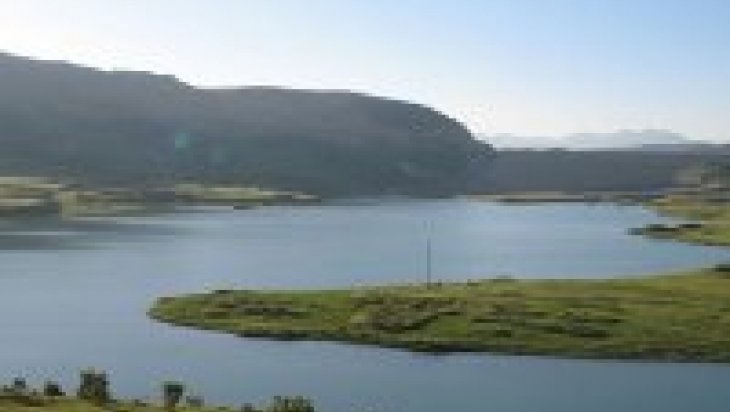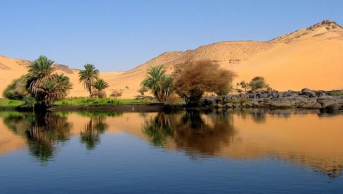The Geneva Consensus on Tigris: A Major Breakthrough?

It was on June 3, 2014 when a statement from Strategic Foresight Group, an India-based think-tank, was announcing a “major breakthrough” on promotion of data calibration and exchange on flows of Tigris River.(1) This was result of a meeting -which was supported by Swiss funding- between Iraqi and Turkish delegations of senior representatives in Geneva, Switzerland. Actually, it was the fifth of a series of meetings started in 2013 which eventually culminated into a consensus.
Meeting under the auspices of Blue Peace initiative, Iraqi delegation was headed by Dr Bakhtiar Amin, former Human Rights Minister, while the Turkish side was led by Dr Yasar Yakis, former Foreign Minister. The meeting was moderated by Sundeep Waslekar, the President of the Strategic Foresight Group. The focus on Tigris, and unintended exclusion of Syria which prevented basin-wide discussions was due to the turbulence in Syria.
Apart from the overall objective, i.e. to promote water as an instrument for peace and cooperation in the region, the Consensus on Tigris has a number of specific objectives as follows:
1- Identifying and assessing available data and fill the gaps in data collection and
measurement;
2- Identification and implementation of common techniques and calibration for data collection, measurements, and methodologies for analysis and reporting;
3- Sharing available technology and relevant information, know-how and expertise in data
collection and analysis;
4- Generation, assessment and harmonization of water quantity and quality data and information in identified sub-sections to facilitate the process of understanding the entire river basin;
5- Carrying out training programs for capacity building.(2)
To achieve the aforementioned objectives, the Consensus statement makes use of three elements: a) measurements, analysis and assessment; b) sharing of technology and c) capacity building.
The Consensus lists a list of relevant tools to enhance the technical cooperation: calibration of measurement instruments, utilization of common measurement and sampling techniques, and development of a common methodology for data analysis. To realize a common methodology which will minimize the disagreement over data; the Statement calls for a number of so-called “initial steps” including “comparison of existing flow-rate measurement techniques, statistical methods and reporting techniques in both countries, and subsequent harmonization of flow-rate measurement methods and calibration of measurement equipment; identification of water quality parameters being measured or to be measured, as well as the measurement techniques; and standardization of data analysis, statistical methods and reporting techniques. According to the Statement, sharing of technology would be achieved via provision and exchange of remote and digital measurement and monitoring systems; advanced sampling and measurement techniques; delineating the best sampling locations, deciding the procedure to take samples, optimum number of samples required, time of sampling and preservation of samples; employing the best available technologies to maintain the health and ecological balance of the river basin while utilizing the water for domestic purposes, irrigation, industrial use and power generation; and using the best available technologies and upgrading the existing ones to treat point source pollution discharges into the river and reduction of non-point source pollution discharges to Tigris River. With regard to capacity building pillar, the Consensus Statement reiterates the significance of development of expertise and stresses the need for joint capacity building programs.(3) A critical point here is the emphasis on the role of third parties, involvement of which, albeit at high-level, was not traditionally welcome by Turkey.
Although it would be hasty to conclude that the Geneva Consensus on Tigris River is a major breakthrough; it still denotes a new level of progress. It is a well-known fact that problems associated with data sharing has long been a stumbling block to cooperation in the Euphrates-Tigris region. Within this context the Consensus has an intrinsic value as a confidence building step, and in the sense that it has the potential to lay the ground for future dialogue which will hopefully based on the reliable and calibrated data.
Nevertheless, it should be borne in mind that the Consensus needs to be officially endorsed by two countries to yield some concrete results. Turkish official support to the Consensus may be more problematic than it may first seem. First, despite being unintended, the Consensus takes Tigris river as a single focal point. Mentioning Tigris as a separate “basin” on several occasions in the Consensus text might be seen as conflictual with what has hitherto been advocated by Turkey. Secondly, the Consensus mentions third-party involvement which seems unlikely to be welcome.(4)
(1) The Geneva Consensus on Tigris River, available online at
http://www.strategicforesight.com/conference_pdf/47694
Consensus On Tigris River_Revised Sep14.pdf,
Accessed on 21 November 2014.
(2) Ibid., pp.3-4.
(3) Ibid.
(4) Kibaroğlu, Ayşegül, Axel Klaphake, Annika Kramer, Waltina Scheumann, Alexander Carius, “Cooperation on Turkey’s Transboundary Waters”, Berlin: Adelphi Research, October, 2005, pp. 89, 92.











